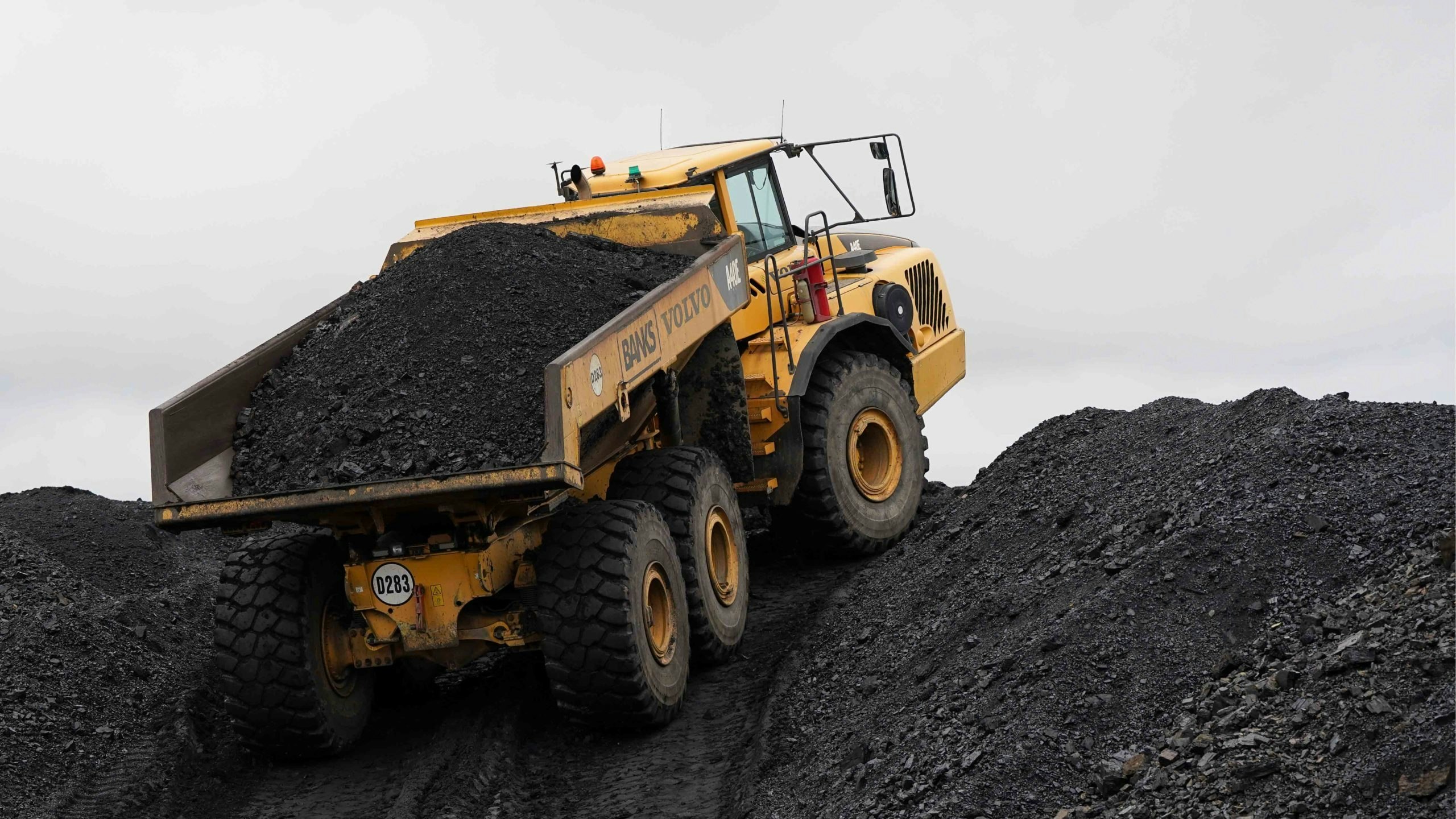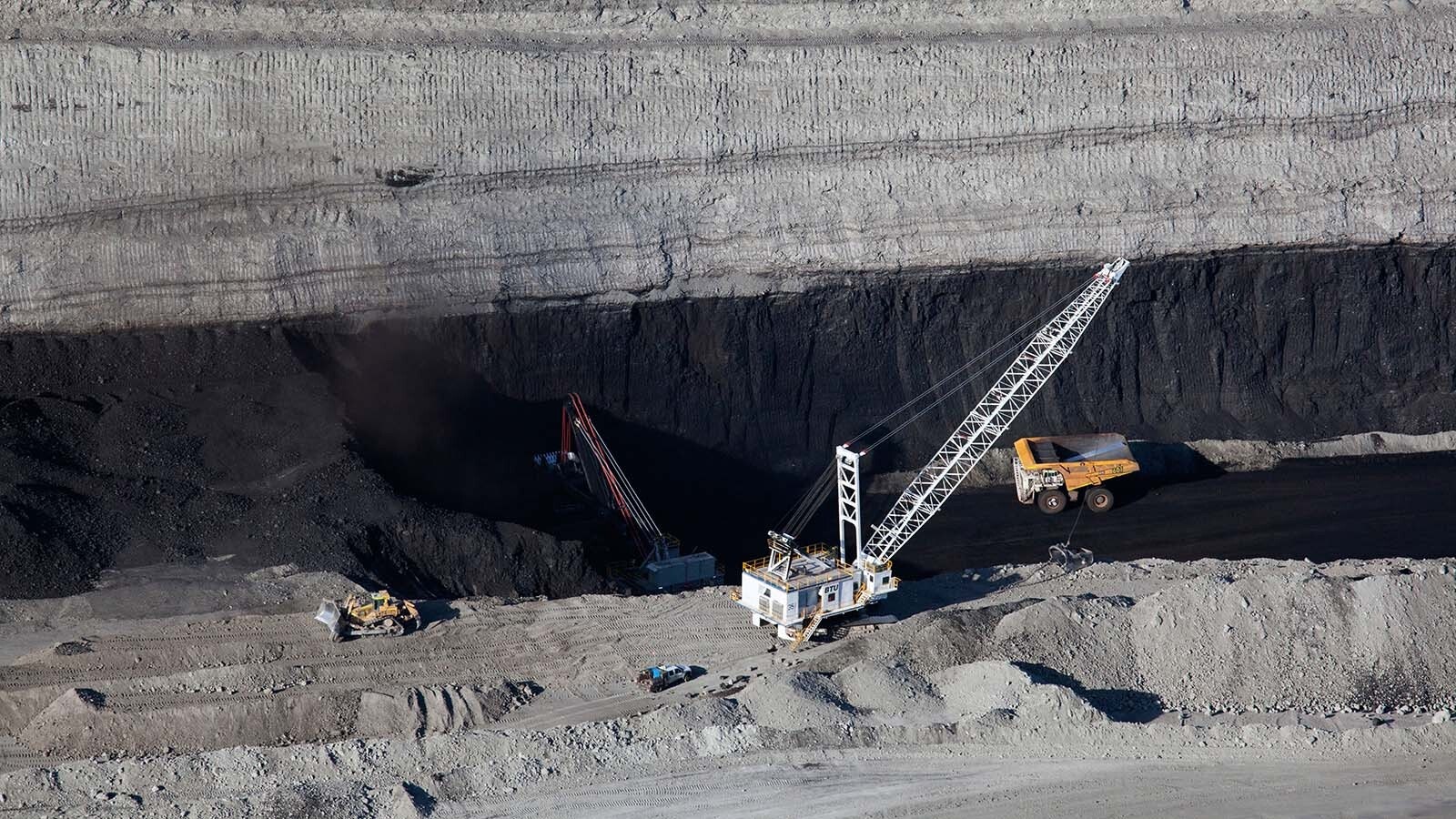The installation of carbon capture technologies could fundamentally change the role coal-fired electrical generation plays in a field of multiple energy sources.
Coal generation once was a base load source that provided 24/7 energy as needed with wind and solar supplementing energy from coal. Now coal-fired generation will be used more to follow energy produced from wind and solar, according to testimony from a PacifiCorp representative at a Monday meeting of the Wyoming Public Service Commission.
Load Following
Rocky Mountain Power examined the economics of installing carbon capture technology at Wyoming’s Jim Bridger and Dave Johnston’s coal-fired power plants. The analysis determined that carbon capture isn’t economical at this time.
“The company will, however, continue to study potential opportunities to install CCUS [carbon capture underground storage] technology at its coal units,” said James Owen, vice president of environmental fuels and mining for PacifiCorp, the parent company of RMP.
Owens testified Monday about the costs and benefits of the CCUS projects.
While the projects could extend the life of the power plants, regulatory uncertainty and a need to keep energy costs low for customers make carbon capture difficult. Coal-fired generation will become a load-following source as the company moves into the future, Owens said.
Historically, coal-fired generation was the main source of power for the United States, accounting for 50% of the nation’s electricity as recently as 15 years ago. As the amount of wind and solar power on the grid increased, that intermittent power supply supplemented coal-fired generation and other baseload energy sources, such as hydroelectric and nuclear energy.
Now that structure is reversing.
“When the sun isn’t shining or the wind isn’t blowing, and those renewable resources decrease, then we ramp our [coal-fired] plant back up,” Owens testified. “So essentially, the coal fleet follows the renewable load.”
Aging Plants
Owens told the commission that the earliest a carbon capture project could be installed at the plants would be 2028 and the projects would last 20 years.The Dave Johnston Power Plant would be over 70 years old by that point.
PaciCorp’s 2021 Integrated Resource Plan, which is a sort of road map for its energy generation future, estimates the operating life of Jim Bridger Power Plant to be 2037, with carbon capture installed.
Owens said that studies show a coal-fired plant’s efficiency will decrease over time, but old plants can still run at high capacities.
“I would probably equate it to a used car. The longer you use it, the more things that are going to be replaced,” Owens said.
Regulatory Uncertainty
Chris Petrie, chair of the PSC, asked Owens about the risks of continued operations of PacifiCorp’s coal fleet when compared with the risks of other energy sources.
For example, battery storage involves a lot of chemicals and there’s a risk to their disposal, Petrie said.
“There is no generation resource that you can enter into a system without some risk,” Owens said.
One of the risks of coal, Owens said, is the policies in other states that are hostile to the commodity. This greatly increases investment risk in coal facilities and associated carbon capture projects.
“All of those [states’ policies] are pressuring us to close coal plants earlier rather than later,” Owens said.
PacifiCorp’s fleet is still 34% coal.
CO2 Capture Not Economical
Besides the capital investments, carbon capture becomes an additional expense for utilities companies to produce power, because there now aren’t marketable products or other value to the carbon captured. This means companies trying to install carbon capture technologies on coal plants must balance the need to reduce CO2 emissions with a need to keep energy rates low.
The CCUS projects are dependent on federal support if it has any hope of being economically feasible, Owens said.
The Inflation Reduction Act (IRA) provided increases in tax credits for carbon capture, but those are set to sunset in 12 years, meaning the estimated life of the plants is based on the life of that tax credit.
Owens said the reliability of PacifiCorps’ analysis of the economic feasibility of carbon capture projects depends on a lot of uncertainties with the federal tax credits under the IRA. These credits apply to multiple generation sources, and depending on how they all play out over time will influence the economic feasibility of carbon capture at the two coal-fired plants.
Public Comments
The PSC hearing was to consider Rocky Mountain Power’s application for authority to establish intermediate low-carbon portfolio standards, as required by state law.
The PSC received a number of public comments against the idea of using carbon capture to extend the life of Wyoming’s coal plants.
“It really is time for Wyoming to accept not only history, but financial reality. No amount of expensive add-ons to coal-burning plants is going to change the fact that coal is environmentally and economically no longer viable,” wrote Kathleen Connell of Buffalo.
Michele Irwin, southwest organizer for the Powder River Basin Resource Council, objected to increased rates that would come with installing carbon capture on coal points.
“The plans submitted by the utilities do an adequate job in highlighting why CCUS doesn’t make sense at this time. If the technology has an application, it’s not in the realm of utility power,” Irwin said.
Irwin encouraged the state to do more to transition away from coal.
Eric South, chairman of the Wyoming Coalition of Local Governments, encouraged the PSC to approve RMP’s application to continue pursuing CCUS to sustain coal and grid reliability.
“The coal-fired plants provide an existing source of reliable energy, which becomes increasingly important as less reliable renewable energy is added to the grid,” South wrote.
Low-Cost Reliability
Commissioner Mary Throne asked if there was a quantifiable benefit to energy reliability that should be considered.
“Our job is to provide low cost reliable power to our customers,” Owens said. “So certainly, value comes from that reliability element, and mitigating power outages.”
Owens said that development of advanced nuclear reactors — such as the TerraPower project in Kemmerer, which PacifiCorp is a partner with — offer future options for more sources of reliable power.





